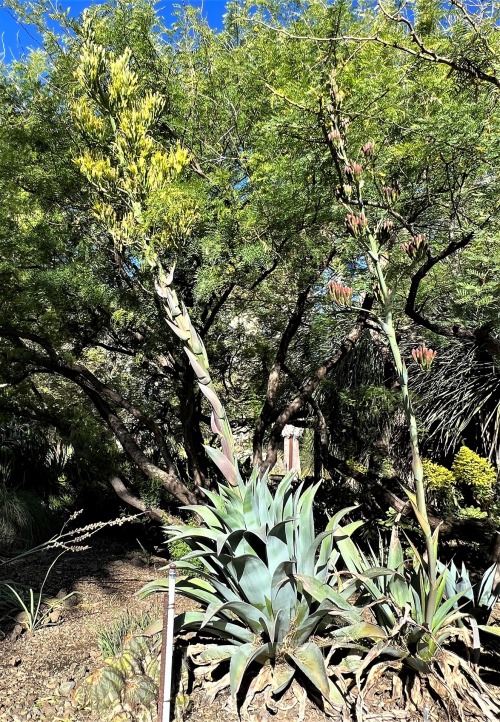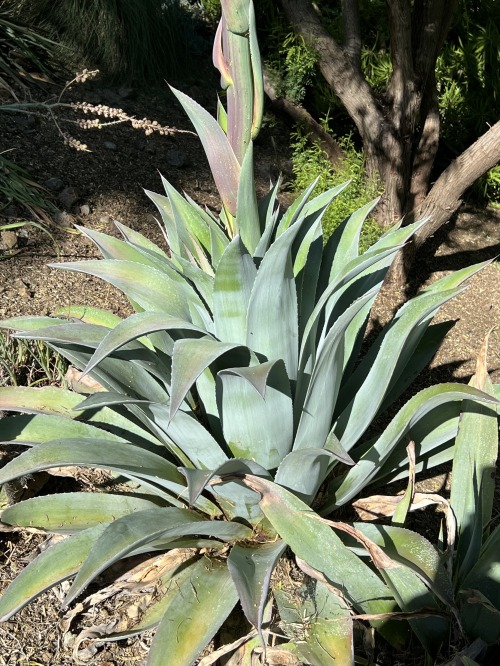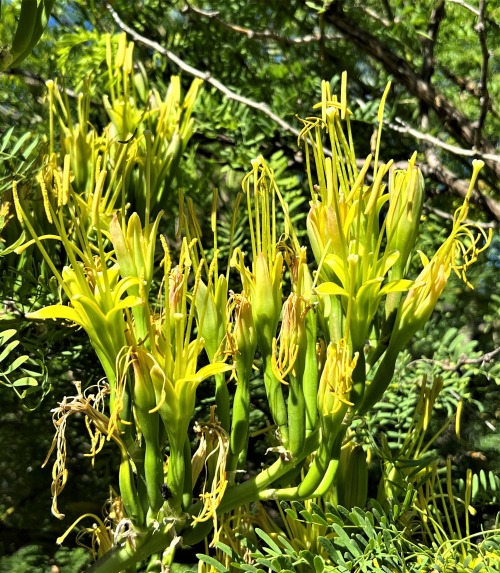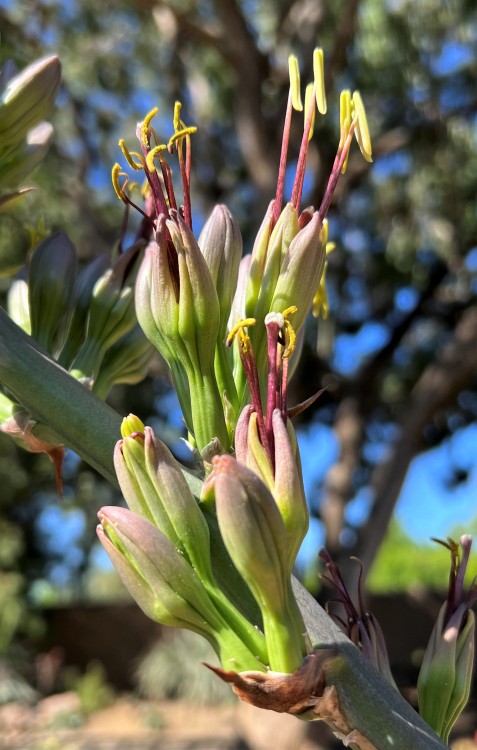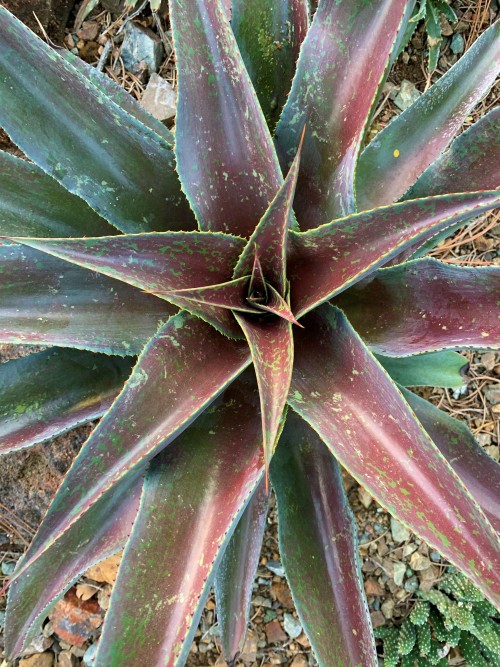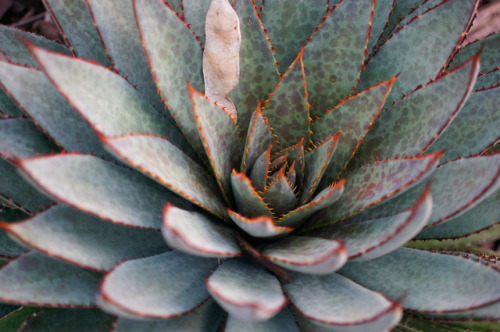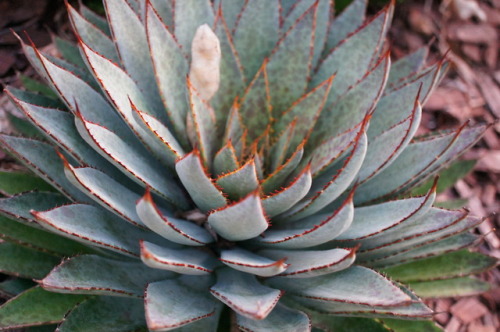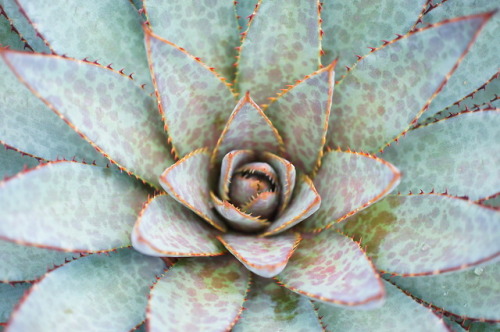#mangave
Agave parrasana × Manfreda ‘Dit Dah’
There are many more Mangave plants available now than there were when I made this hybrid ten years ago. Its mother is Agave parrasana, from Coahuila in northern Mexico, and its father is a Manfreda hybrid I had done years earlier. It is very similar to its sibling ‘Blue Fountain’, whose picture I posted in Dec. 2021. What I especially like about these 2 plants is the way the leaves seem to erupt upward, rather than splaying outward as many Mangave cultivars do. Though the leaves have spots, they are subtle.
-Brian
Post link
×Mangave ‘Mayan Queen’
Agaves, often called Century Plants, are well known in horticulture, but their soft-leaved relatives in the genus Manfreda are less often encountered. Manfreda is very closely related to Agave, and in recent years many authorities have advocated for its inclusion within Agave, but this has not really caught on in horticulture. Manfreda flower stalks are generally shorter and less showy than those of their relatives, but many of the species have an attractive trait not seen in regular agaves - purple spots. In recent years, many crosses between Aagve and Manfreda have been introduced, and these are listed under the name ×Mangave (the multiplication sign at the beginning is to show that this a cross between 2 different genera, not a real genus, but the name is often written simply as Mangave). The plant pictured is one of these newcomers: ×Mangave ‘Mayan Queen’, and this is the first time it has flowered here at the Ruth Bancroft Garden.
-Brian
Post link
Mangaves
A Mangave (more properly written ×Mangave) is a hybrid between a Manfreda and an Agave, and hybridizer Hans Hansen has been busy creating a whole assortment of them. Pictured are three of these planted at the Ruth Bancroft Garden: ‘Desert Dragon’, ‘Inkblot’, and ‘Mission to Mars’. The last one is getting redder as it increases in size, much to our delight. The purple spots and blotches are from the Manfreda part of the parentage, and they certainly give the plants some pizzazz!
-Brian
Post link
xMangave ’Bloodspot’
Currently, this plant is considered an intergeneric hybrid between ManfredaandAgave. The two genera are both new world flora and hybridize readily. So readily, in fact, that the two genera may actually be a single genus. As for now, there are crazy new xMangavehybrids appearing with regularity, and their habits and limitations are still being discovered. This cultivar is very Agave-like in appearance, with dangerous spines and extra pokey leaf tips. With its pale complexion and contrasting cranberry spots, this plant is basically pointy eye candy. Also, its relatively compact size makes it convenient for containers and smaller gardens. The origin of this hybrid is believed to possibly be Agave macroacantha xManfreda maculosa. (source)
Post link

